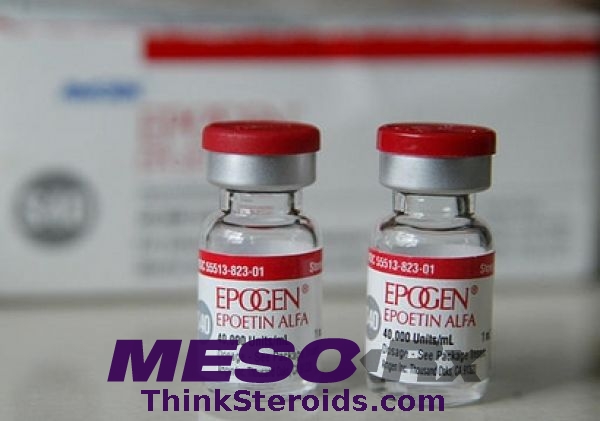
Widespread doping continues in cycling despite recent proclamations by Olivier Rabin, the science director for World Anti-Doping Agency (WADA), and Pierre Bordry, the head of the French Anti-Doping Agency (AFLD), that they are practically on the verge of eliminating doping from cycling.
The testosterone doping test is flawed. The EPO test is flawed in more ways than one. Peptide hormones such as human growth hormone (HGH) and insulin-like growth factor (IGF-1) are currently undetectable. And this does not begin to address other current and emerging synthetic blood boosting techniques being used by cyclists.
It seems that anti-doping agencies are happy to assert that they are winning the war on doping while neglecting issues such as biogeneric/biosimilar erythropoietin (EPO) stimulating proteins (ESPs); blood oxygen carriers: perfluorocarbon emulsions (PFCEs) and hemoglobin based oxygen carriers (HBOCs); hydroxyethylstarch (HES/HAES); and before long, if not already, EPO-mimetic peptide (EMPs).
The newer blood boosting techniques like PFCEs and HBOCs do not increase hematocrit levels; so these drugs have performance enhancing effects without risk of exceeding the 50% hematocrit cutoff. Furthermore, the performance enhancing effects of PFCEs and HBOCs are instantaneous. The HES/HAES are actually plasma expanders and would dilute the hematocrit concentration.
Occasionally, the press reports on these substances e.g. when the U.S. Postal Team was caught with Activegin and subsequently admitted taking Activegin to the 1999 Tour de France prior to its ban and when Mauro Gianetti almost killed himself using PFCEs during the 1998 Tour of Romandy. (Ironically, Mauro Gianetti is the team manager who was “duped” by riders on the scandal-plagued Saunier Duval-Scott cycling team).
And while most of us just learned about a third generation version of EPO called Mircera, a “fourth-generation” version of EPO belonging to the class of drugs known as EMPs may receive FDA approval within the next 2-3 years; it is unknown whether athletes are currently experimenting with Hematide or Hemomer.
Blood oxygen carriers: perfluorocarbon emulsions (PFCEs) and hemoglobin based oxygen carriers (HBOCs)
Actovegin (Nycomed)
HemAssist (Baxter Healthcare)
Hemolink (Hemosol)
Hemopure (Biopure)
Oxyglobin (Biopure)
Oxycyte (Synthetic Blood International)
Oxygent (Alliance Pharmaceutical Corp)
Oxyglobin (Biopure)
PHER O2 (Sanguine Corp)
PHP (Curacyte)
Plasma expanders: hydroxyethylstarch (HES/HAES)
Dextran (B. Braun Medical)
Gentran (Baxter Healthcare)
Hespan (B. Braun Medical)
Voluven (Fresenius Kabi)
EPO-mimetic peptide (EMPs)
Hemomer (AplaGen Biopharmaceuticals)
Hematide (Affymax/Takeda Pharmaceutical)
***
Cyclists will continue to use performance enhancing drugs. They will continue to remain ahead of the anti-doping agencies. By only giving credence to official statements from WADA, AFLD, etc., one would believe this was all but impossible. But the evidence that doping continues is everywhere.
For example, here is an experpt from a post at RoadBikeReview.com regarding how doping is still possible given all the doping controls:
HGH, IGF-1 and Actovegin are pretty much the minimum that riders take. Ok…a few might just be on HGH because after all HGH converts in the liver to IGF-1. NONE of these drugs can be dectected…
[…]
Now for a one day classic they just come to controls with a 49% hematocrit. They can get there with blood doping or Dynepo use (human identical epo) After morning controls they have about an hour, and sometimes a little more, to blood dope. Units of their own blood are slammed into them with blood pumps. You can infuse a litre of packed cells in about an hour with no issue. This is at least 3 units of pure red cells. This will boost your hematocrit by at least 5% and sometimes 8-9%! The top riders then line up at the starting line with a 55-59% hematocrit!!!
After the race the extra blood is taken out, the plasma is spun off and the red cells are frozen as above. They end up with a 50% hematocrit. Alternatively they can just bleed the extra blood out of you until you are at 50%.
[…]
In grand tours you have to pass morning controls with no more than a 50% hematocrit, just like for any race, so they either take the extra blood out of you after the stage and save for re-infusion after morning controls, or they simply jack you with IV saline and volume expanders like Hespan right before morning controls so your hematocrit is diluted to 49-50%. You still have the same O2 carrying capacity that you had at say 56% …the blood is just diluted down. This extra fluid also comes in handy in the stage.
If you blood dope for any length of time you must supplement with very tiny doses of epo and only via the IV route. Blood doping shuts down your own red cell production so you will have next to zero retics (immature red cells) in you …and if control sees this they will know you are blood doping.
Is WADA really winning the war against doping in sports?
About the author
Millard writes about anabolic steroids and performance enhancing drugs and their use and impact in sport and society. He discusses the medical and non-medical uses of anabolic-androgenic steroids while advocating a harm reduction approach to steroid education.

No replies yet
Loading new replies...
Join the full discussion at the MESO-Rx →